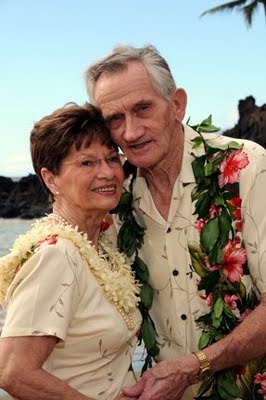Though he didn't set out to become an expert on Hawaiian culture, Keli'i Tau'a may be the most revered teacher of hula and chant you never heard of.
STORY BY ILIMA LOOMIS
This article appears in the September-October 2009 issue of Maui Magazine
It wasn’t until young Keli‘i Tau‘a’s feet hit the water that he remembered he’d never learned to swim.
The thirteen-year-old student at Kamehameha Schools in Honolulu had been raised in Kula, far from the ocean, but when, on a Saturday excursion to Waikiki Beach, his mates ran to the end of the concrete- and-stone breakwater and jumped off, he leaped too.

“Any human being does the natural thing—the dog paddle,” he chuckles. “But I was struggling. I let myself sink and thought, ‘Well, this is it,’ then I kicked myself up and started going again. When I looked ahead and saw all the tourists on the shore, I thought, ‘Man, I got a long way to go.’”
It wasn’t the last time Tau‘a would dive into something without knowing how deep it would be.
Today the sixty-six-year-old Ha‘iku resident is an acknowledged master of Hawaiian music and chant, and an expert in traditional ceremonies. Some of the Islands’ most respected cultural leaders consider him a mentor.
Because of his knowledge of ancient protocols, Tau‘a’s been called on to bless everything from new canoes to a jetliner. He’s led his hula halau, Maui Nui o Kama, for thirty-six years, and taught Hawaiian language and culture at Maui Community College for more than a decade. One of the most prolific Hawaiian-language songwriters living today, he has recorded more than a dozen albums of Hawaiian music and chant, collaborating with Hawaiian music greats like Roland Cazimero and Gabby Pahinui.
But while Tau‘a is revered by students of Hawaiian culture, many people outside that community don’t even recognize his name.
“He just flies under the radar,” says Clifford Nae‘ole, cultural advisor to the Ritz-Carlton, Kapalua.
Nae‘ole learned hula from Tau‘a, and says that, as a teacher, Tau‘a was strict, exacting and old school. “What mattered to him was the culture, the protocol. We would practice in the morning, early, before the sun came up sometimes. Sometimes we’d practice late at night. He was saying, ‘How much do you want this? Show me what you want, and that’s what you will receive.’”
Nae‘ole says Tau‘a’s humility, a product of the Hawaiian spiritual traditions he follows, and his intense devotion to studying and teaching rather than self-promotion, are some of the reasons he isn’t better known in the wider community.
That may be changing. Tau‘a recently returned to the recording studio after more than a decade. He released a lyrical album, Cloud Warriors, in 2008, and a new album of chant, E Ala Hawai‘i, earlier this year. An album of songs inspired by the voyaging canoe Hokule‘a is planned for release in September. And last April, at the Ritz-Carlton, Kapalua’s Celebration of the Arts, Tau‘a received Na Mahana Award of Excellence in recognition of his lifetime of dedication to Hawaiian culture.
We would practice in the morning, early, before the sun came up sometimes. Sometimes we’d practice late at night. He was saying, ‘How much do you want this? Show me what you want, and that’s what you will receive.’”
“Kumu’s teaching is the spiritual connection,” says Kimokeo Kapa- hulehua, himself a tireless advocate for Hawaiian culture. “Kumu teaches us that we must be spiritually connected before we can be physically connected. This gift, this mana [power], is what makes it possible to feel the power of the paddle, the canoe, the spear for fishing, the hula. Nainoa Thompson, the navigator of the Hokule‘a, told me, ‘I am the navigator. I set the physical path. Kumu Keli‘i Tau‘a delivers the spiritual guidance.”
Tau‘a acknowledges he’s never sought the spotlight. In fact, he says he never had an interest in learning hula, chant or Hawaiian spiritual practices, until his elders gently nudged him in that direction.
“Today’s youngsters don’t really recognize the value of kupuna [elders], who can guide and help them,” he says. “My success is due to the mentoring of those people.”
Tau‘a was teaching classes in Hawaiian language and history at Waimanalo Intermediate School on O‘ahu in the early 1970s when the principal of the school took him aside and showed him a flier for a training program with the master Maiki Aiu Lake to become a kumu hula, or hula teacher—and suggested Tau‘a sign up. The Hawaiian renaissance was blooming, and the principal wanted more cultural activities on campus.
Tau‘a was taken aback. He enjoyed teaching ‘ukulele and island history, and had been playing and singing Hawaiian music in clubs at night to supplement his modest teacher’s paycheck, but Tau‘a hadn’t considered becoming a serious student of Hawaiian culture. And he’d never danced hula.
“I thought of myself as a macho person,” he said. “At that time, dancing wasn’t cool [for men].”
But something about the class piqued his interest. Tau‘a had grown up in Kula in the 1940s, where his father followed the Hawaiian moon calendar for fishing and farming, and many other ancient traditions were still a part of daily life. And Tau‘a had become concerned, watching his students grow up more familiar with rock-and-roll than the music of their heritage. He signed up.
Tau‘a said later that the hula class was one of the hardest things he’d ever done; at the end of each session, his legs were often so weak he could barely make it down the stairs from the second-floor studio.
After graduating from the program as a kumu hula, Tau‘a went on to study chant with masters like Kaui Zuttermeister and Ka‘upena Wong. He recorded some of the Islands’ first chant albums, and his skill led Hawaiian music legend Gabby Pahinui to ask Tau‘a to collaborate on two of his records. Tau‘a was humbled to be asked.
“I said, ‘Who am I?’ But [Pahinui] wanted the language, he wanted the chanting.”
While he’d already recorded several albums of original songs, Tau‘a said there was an intense purity about chant that attracted him.
“With chanting, you don’t need any accompaniment. It’s you centering yourself. [I loved] that you could produce a feeling, a message, a language that is one-of-a-kind.”
After recording more than a dozen albums in the 1970s and ’80s, Tau‘a moved back to Maui and retired from music. A painful divorce had made him realize the strain his performing schedule put on his family life. He settled into a quiet routine, teaching language and culture at Maui Community College’s language institute and adult education program.
It was in the classroom that an eager student asked him to dust off his old recordings, and offered to help him copy his earlier albums from vinyl to CD. A friendship struck over the turntable blossomed, and Keli‘i and Chelsea Ann Tau‘a married in 2006.
Tau‘a says that if he has become a master of chant and other Hawaiian arts, it’s only because of the knowledge he received from his elders. He acknowledges that it’s both strange and rewarding to now find himself a magnet for students wishing to study Hawaiian arts with a master.
While recording his latest album of chants, Tau‘a wasn’t satisfied with one of the tracks, and sat back in the Wailuku studio in frustration.
“I said, ‘I don’t know if the kupunas are going to accept that.’”
The producer sought to reassure him.
“He said, ‘Kumu, you have to realize—you’re the kupuna now!” Tau‘a recalls. “I thought that was hilarious.”








